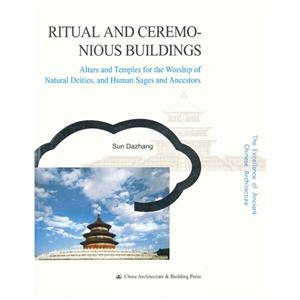
作者:Wei Ran 著
页数:211
出版社:中国建筑工业出版社
出版日期:2012
ISBN:9787112142880
电子书格式:pdf/epub/txt
内容简介
the sophistication of ancient chinese architecture gives it a
specialplace within the architecture of the world. there are
magnificentimperial palaces, solemn and breathtaking imperial
tombs,mysterious sacrificial and ancestral altars and temples as
well asa variety of vernacular dwellings of natural simplicity.
religiousbuildings are dotted about the country, with a riotous
profusionof buddhist, taoist and islamic temples or mosques. on top
of allthis, city walls and fortifications, civic buildings for
miscellaneouspurposes are rich in variety and form impressive
landmarks.the exceptional series offers wide coverage of themes
pertainingto all aspects of chinese architecture and is unrivaled
both for itsextensiveness and accuracy as well as for the
presentation of thematerial.
作者简介
Wei Ran,Born in Shanghai in 1951, Wei Ran entered the
ChinaArchitecture & Building Press in 1997 and wasresponsible
for the editing and photography ofworks onarchitecture. He is a
director of an editorial department.A member of the Beijing Science
and TechnologyVideo Association, Wei Ran has been involved in
theediting, photography and design of the following books:Ancient
Architecture in Chengde, Explanatory Noteson a Treatise on
Architectural Methods, Art of ChineseGardens, A Tourist Guide to
Chinese Architecture,Confucian Temple Architecture in Qufu, Old
SummerPalaces, Top Grade Projects in Beijing and others.
目录
tourist map of buddlust buildings in northern shanxi
editor’s note
preface 1
preface 2
general introduction
the formation and development of clunese buddhism——explaining
buddhism by mysticism and supplementing mysticism with
buddhism
i.the initial sptead of buddhism
ii.the beginnings and the translation of scripture
iii.the establishment and prosperity of the buddhist sects
iv.tibetan buddhism (lamaism)
the founding and evolution of the buddhist monastery in china——from
the establishment of the baima temple to the forest-like buddhist
monasteries of the sui and tang dynasties
i.the origin of the monastery















